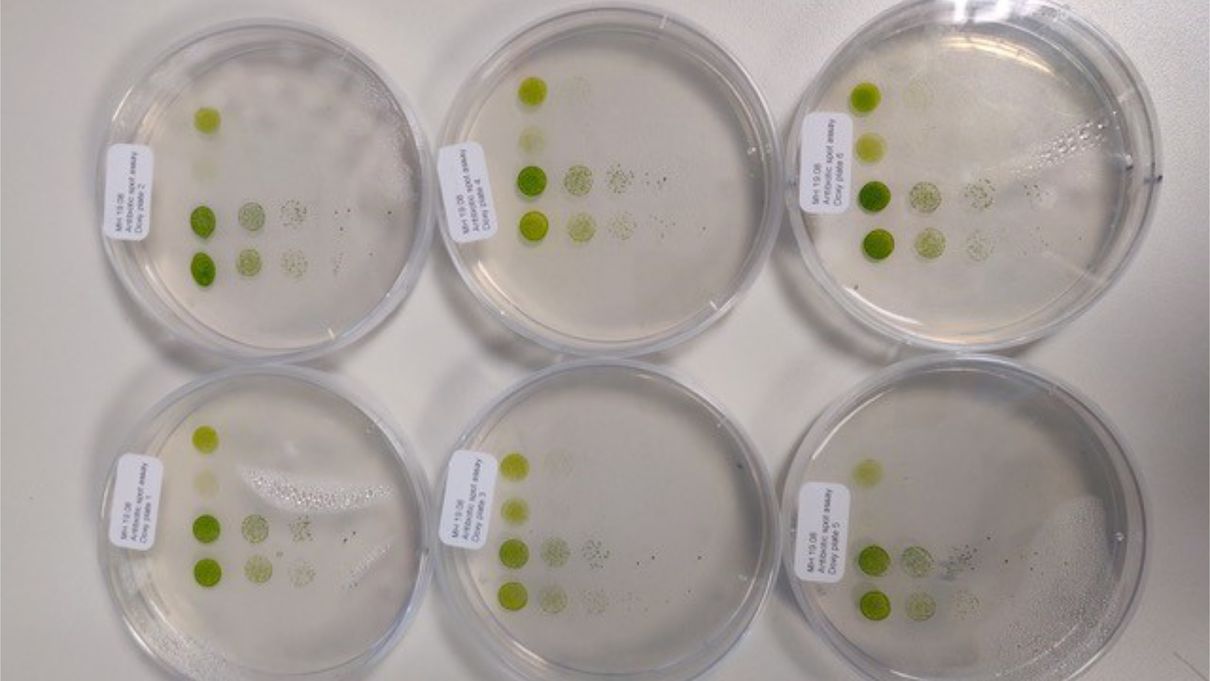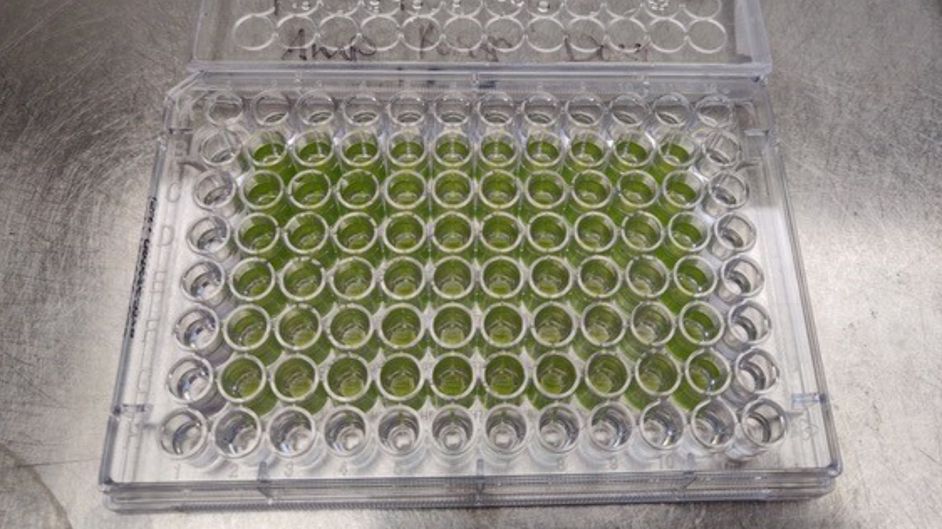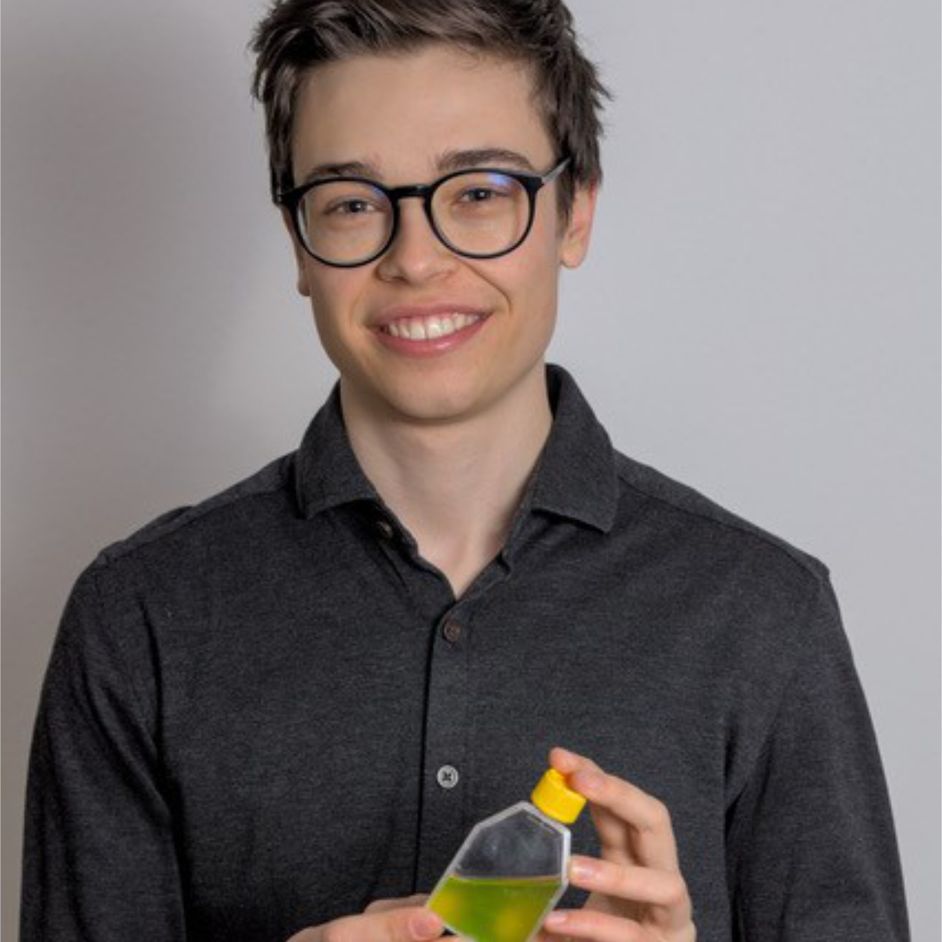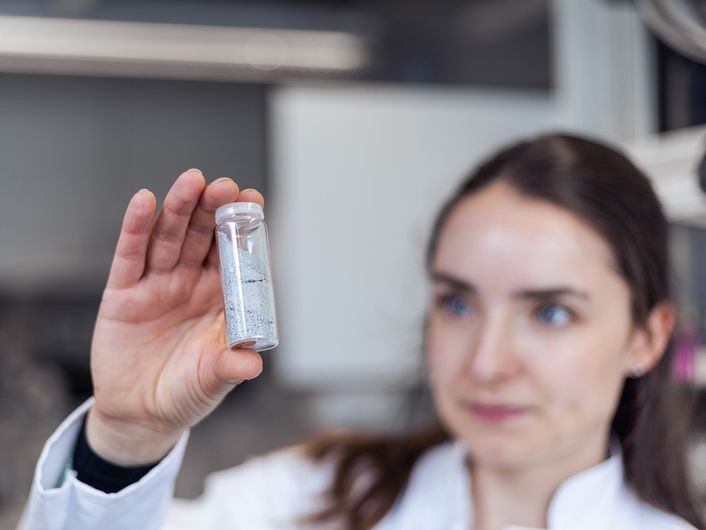Microalgae – multitalented organisms for a livable future?

Microalgae are small single-cell algae that are responsible for the characteristic green color of bodies of water. There are various possible applications depending on the type of microalgae, ranging from food products, where they create the fresh green color of popular smoothies, to medicine and cosmetics, and all the way to the industrial area.
The algae can be optimized by means of molecular biological procedures such that they serve as efficient raw material suppliers for fine chemicals. The fatty substances in the biomass can be used for the production of biofuel, for example. An airplane fueled only with “algae-based kerosene” was able to take off back in 2010. Microalgae could thus play an important part in the context of carbon-neutral mobility in the future.

Algae mixed with antibiotics.
Intensive research has already been conducted on the industrial production of energy-rich microalgae. It offers the major benefit that the yield of biomass is considerably higher as compared to conventional agriculture, and the water and land consumption is therefore significantly lower.
As part of this research project, the Audi Environmental Foundation is involved in the sustainable production of biofuels and fine chemicals from microalgae, in this case the green alga “chlorella vulgaris.” The purpose of ivestigating this type of alga is to make an active contribution to protecting our climate.

Moritz Hamberger, student at the Ruprecht-Karls-University Heidelberg.
“Just like conventional plants, microalgae perform photosynthesis and extract CO₂ from the air. However, they require far less space and grow significantly faster and therefore much more efficiently,” says Moritz Hamberger (20). “The algae are highly versatile and can be used as food or for the production of industrial raw materials, for example. Additionally, the conflict between food production and the production of biofuels is avoided.”
The latest biotechnological methods are to be used to optimize existing algae strains with the aim of producing fuels that are both carbon-neutral and economically profitable in the future. The necessary procedures have not yet been sufficiently characterized, which is why the focus is on the development of such methods.
The aim of the research project is to create a universal biotechnological platform that will allow microalgae to be used as an efficient supplier of raw materials in the future. The methods that have been developed are to be published as part of a molecular biological toolkit.


